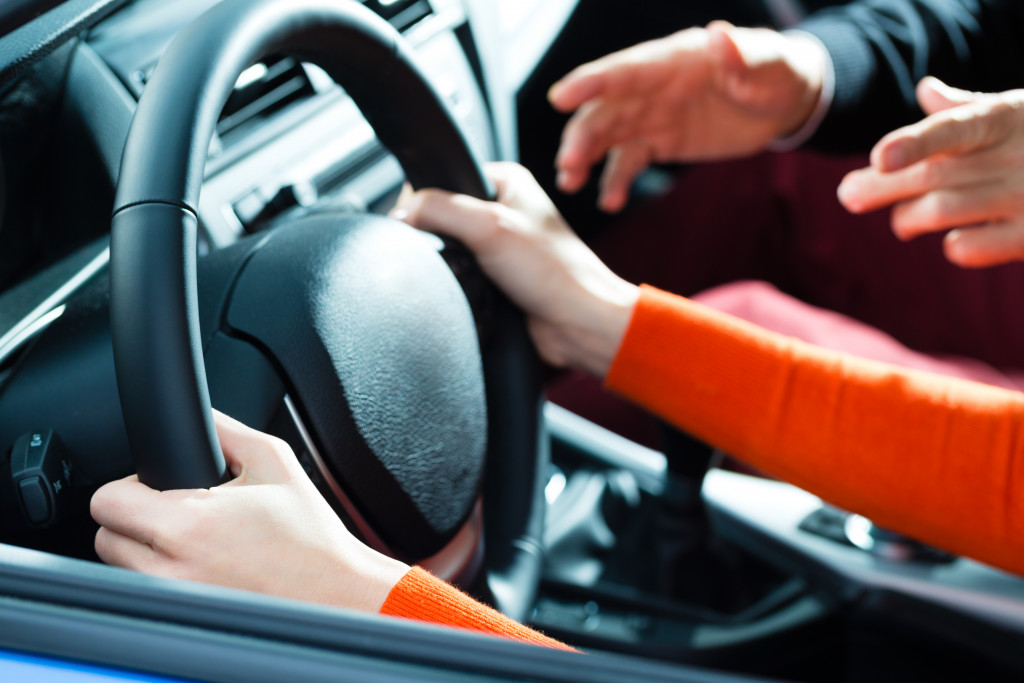Learning how to drive is indeed a thrilling time in any teenager’s life. But the only time a teenager should be getting behind the wheel is when they have a learner’s permit and are under a licensed adult’s supervision.
The US Department of Motor Vehicles (DMV) designed the process of obtaining a learner’s permit to teach first-time drivers that there are responsibilities with the privilege to drive. This process also teaches young drivers they have to submit themselves to government regulations before earning an official driver’s license.
Young drivers getting their learner’s permit is the very first step to becoming a full-fledged licensed driver. This is a significant milestone for most teenagers as this signifies growing independence. Perhaps the second biggest and frequently logical step is buying their first car. These two considerable milestones are great teachable moments to illustrate the value of responsibility, safe driving, and even wise money habits.
Guide your children in the step-by-step process of applying for a learner’s permit up to the point they get their first car. Hopefully, you’ll teach the values they need to learn along this path toward independence.
What Is a Learner’s Permit?
A learner’s permit is a provisional driver’s license issued to individuals learning to drive for the first time. It allows the individual to drive a vehicle but with restrictions. The minimum age requirement for applying for a learner’s permit is anywhere between 14 and 18, as stipulated by the applicable state’s mandates.
An individual with a duly-processed learner’s permit allows them to drive on all public roads but under a licensed adult’s guidance. Also, there will be a limit to the number of passengers on a car being driven by a learner’s permit holder. This limit varies across states, but typically, having passengers is not allowed, apart from the licensed adult. This provisional permit allows a new driver to learn and practice driving in preparation for the driving test. A learner needs to accumulate several driving hours set by state regulations before applying for a driver’s license.
How to Get a Learner’s Permit
Your teen can apply for a learner’s permit at your local DMV. DMVs in some states can also process applications online. Some states might have different procedures, but this is what your teen will have to do to acquire a learner’s permit:
- Take and pass the written learner’s permit test.
- Pass a vision certification evaluation.
- Submit documents verifying identity, age, and residency.
- Complete an accredited driver’s education course.
- Accomplished learner’s permit application form.
- Pay permit fees.
- For minors under 18, submit a signed consent form by a parent or guardian.

Buying Your Teen’s First Car
The cost of a brand-new car can seem steep, but financing options are available, making car purchases more manageable. But before you start canvassing for vehicles with your teen, figure out a price range you can afford. Perhaps you can arrange with your teen how you will assist them in this investment.
Even if your child is buying the car for themselves, your guidance on this will still be valuable. Help your teen decide on a realistic budget, and if necessary, plan with your child how to achieve their goals. Consider how much you have saved up, how much income you or your teen receives, and how both or either of you can make monthly payments. You can turn this into a teachable moment about the value of money and responsible spending.
Canvassing for Cars
Once you both set a budget, you can begin weighing your options. Set time aside for research before visiting dealerships. The internet is always a good place to start. Simply typing up search keywords like “new Kia autos for sale” can yield you fruitful search results. All you need is to find a car that matches your teen’s needs, and you have significantly narrowed down your search.
Deciding Between a New or Used Car
In the process of budgeting for and researching cars, the question of whether you should pick a brand-new car or purchase a used unit might come up. Here are some advantages of buying brand-new:
- Lower maintenance costs
- Easier to customize
- Improved fuel economy
- Advanced safety and technology features
- Manufacturer’s warranty
It might be more advisable for an early or first-time driver to go with brand-new if your budget allows it. But you won’t go wrong with a used one not older than five years.
Do Test Drives
As you and your teen narrow down your choices, it’s ideal to visit car dealerships and take the top-choice models for a test drive. You and your teen should get a feel of the car you’re considering. The actual handling of the different car models might be the deal maker. Doing test drives will also allow you to compare car performance on other road conditions.
A learner’s permit is a provisional driver’s license that allows your legally aged teen to drive under certain restrictions. This permit is required before obtaining a full-on driver’s license. Varying across states, teenagers aged 14–18 years old can apply for a learner’s permit. This is a good phase in your teen’s life to reinforce teachings about independence and responsibility, especially if you plan to get your teen their first car soon after.




